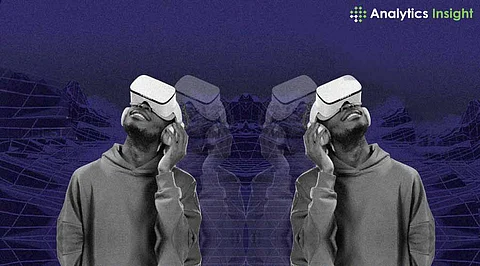

Apple’s Vision Pro offers groundbreaking features for mixed reality, but its high price of US$3,499 makes it unattainable for many developers. Fortunately, several alternatives exist, providing excellent functionality at more affordable price points. Here’s a look at some of the best Vision Pro alternatives for developers, focusing on mixed reality experiences, compatibility, and ease of use.
The Meta Quest 3 is a solid option for developers seeking an affordable yet powerful alternative to the Vision Pro. Priced at around US$500, it offers a range of advanced features, such as Snapdragon XR2 Gen 2 chipset, high-resolution displays (2064 x 2208 pixels per eye), and full-color passthrough for augmented reality. Though the display quality is lower than Vision Pro’s, the Quest 3 is ideal for developers working on VR and AR gaming or general entertainment applications. The internal battery and all-in-one setup make it highly portable, perfect for on-the-go development and testing.
The Quest 3 also supports popular development platforms like Unity and Unreal Engine, making it a good choice for developers looking for a budget-friendly alternative to the Vision Pro without compromising too much on performance.
For those seeking something closer to Vision Pro’s high-end experience, the Meta Quest Pro offers more advanced features at a mid-range price of US$999.99. It provides eye and face tracking, which are crucial for developers focusing on social VR and realistic interactions. The 12GB of RAM and 256GB storage make it highly capable of running more resource-intensive applications, and the 6DoF inside-out tracking is excellent for both VR and AR environments.
Meta Quest Pro is perfect for developers aiming to build complex mixed reality experiences, thanks to its pancake optics, which improve clarity and reduce latency. The enhanced weight distribution also allows for long hours of use, which is vital for extensive development work.
The HTC Vive XR Elite, priced at around US$1,499, combines high-end features with versatility, making it a compelling choice for developers working across both VR and AR. Powered by the Snapdragon XR2 Gen 1 chipset, it delivers strong performance for a wide range of applications. Its 110-degree field of view and 2160 x 2160 per-eye resolution provide an immersive experience that rivals the Vision Pro in many aspects.
The Vive XR Elite also offers the flexibility of a modular design, allowing developers to switch between different modes of use. This makes it ideal for those developing diverse applications across industries like gaming, education, and enterprise solutions.
For developers focused specifically on augmented reality and spatial computing, the Magic Leap 2 is one of the closest competitors to the Vision Pro. With a price tag of US$3,299, it’s almost as expensive as the Vision Pro but offers specialized tools and hardware for AR-focused development.
The Magic Leap 2 provides advanced eye-tracking capabilities and a lightweight design, making it a strong contender for developers working on enterprise applications like medical training, remote collaboration, and 3D visualization. It is tailored to professional creators and developers who require precision and low-latency interaction in real-world environments.
The XREAL Air 2 Ultra stands out as one of the more affordable options for developers working on augmented reality. Priced at approximately US$699, these AR smart glasses offer a sleek, compact form factor and are lightweight at only 80 grams. Though the performance doesn’t match that of the Vision Pro, they are well-suited for developers focusing on lightweight AR applications such as entertainment and productivity tools.
These glasses are powered by a Qualcomm chipset and feature Sony’s micro-OLED display technology, offering a high refresh rate of 120Hz. While not designed for complex mixed-reality applications, the XREAL Air 2 Ultra is ideal for developers looking to create tethered AR experiences, especially for mobile devices.
For developers looking for a PC-based VR headset, the HP Reverb G2 is a top choice. At US$600, it delivers impressive resolution of 2160 x 2160 pixels per eye, making it ideal for developers who prioritize visual clarity. The Reverb G2 is compatible with SteamVR and Windows Mixed Reality, offering developers a wide range of tools to create immersive experiences.
Although it lacks standalone capabilities and relies on being tethered to a powerful PC, the Reverb G2 excels in PC-based gaming and 3D content creation. Developers who need to test complex applications in a high-resolution environment will appreciate its superior visuals and reasonable price.
Several alternatives to the Apple Vision Pro cater to different aspects of AR and VR development. The Meta Quest 3 is the most budget-friendly option, while the Meta Quest Pro and HTC Vive XR Elite offer higher-end features at a mid-range price. For AR-centric projects, the Magic Leap 2 and XREAL Air 2 Ultra are excellent choices, with the latter being more affordable for lightweight development. The HP Reverb G2 remains a strong option for developers who require PC-based VR environments with exceptional resolution.
Each alternative offers distinct advantages depending on the needs of developers, from cost and portability to performance and display quality. Choosing the right tool depends on the specific goals of the project and the desired user experience.
